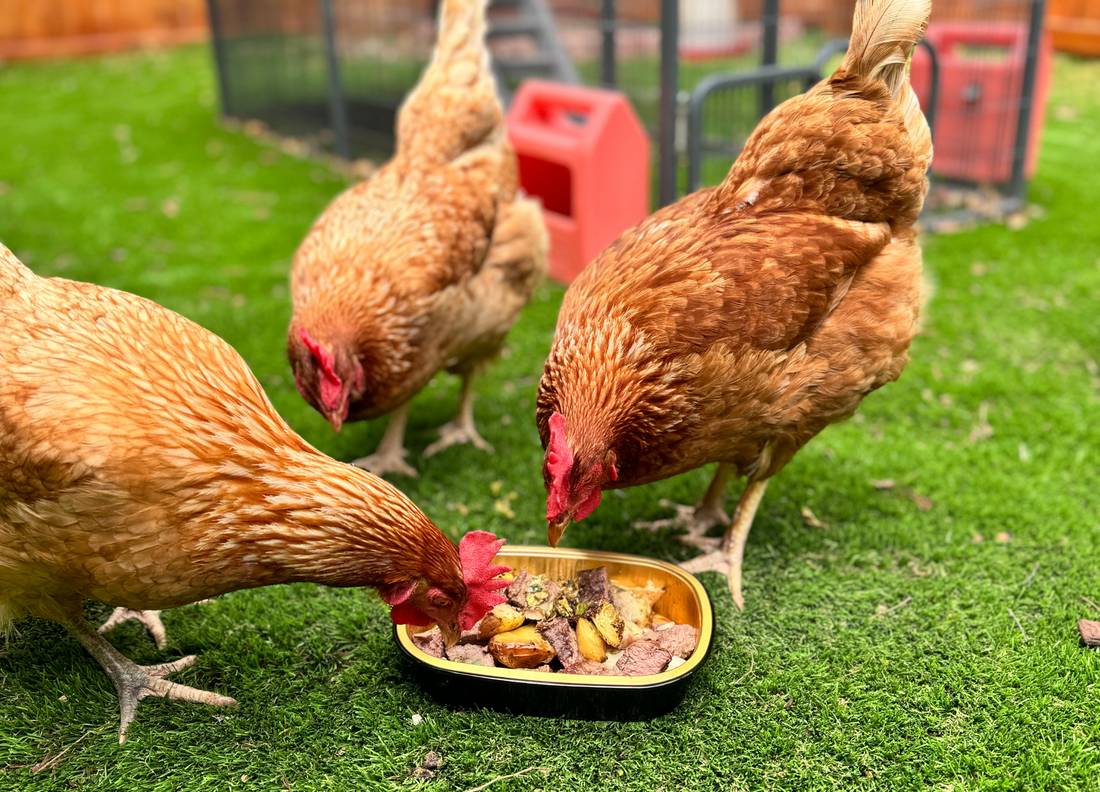

Hey there, fellow chicken enthusiasts! Let's talk about how those feathery friends in your backyard are doing more than just laying eggs—they're actually making a huge impact on reducing food waste and saving the environment, all while adding a little charm to your community.
Picture this: you've got a bunch of leftover food scraps, and you're not sure what to do with them. Well, instead of tossing them in the trash where they'll end up in a landfill, why not feed them to your backyard chickens? Yep, turns out those cluckers are fantastic at recycling food - and turning them into nutrient packed food for the whole family.
In fact, they are so good at it - they've gotten the attention of local cities. Take Austin, Texas, for example (our home town!) Here, the city is leading the charge with a cool program that pays folks to keep backyard chickens. Why? Because it's all part of their plan to cut down on the amount of food waste clogging up landfills. Smart, right?
But before we start singing the praises of our plucky pals, let's get down to the nitty-gritty and see just how much food these chickens can chow down on. That's where some serious research comes in. I'm talking about a deep dive into the world of food waste and chicken diets.
Did you know that a whopping one-third of all the food produced for us humans goes uneaten? And about 15% of our trash is just food scraps. Crazy, right? That's where our chickens come in clutch.
Turns out, chickens can put away about 1.6 pounds of scraps per week! That adds up to roughly 83.2 pounds per year per chicken. Imagine a little flock of four gobbling up as much wasted food as the average American tosses out each year. Mind. Blown.
Breaking Down the Numbers
The experts have crunched some numbers to see just how valuable these chickens really are. They use fancy financial analysis techniques like payback period, net present value, internal rate of return, and profitability index. Sounds complicated, but it's basically just figuring out if the investment in chickens pays off.
And guess what? It totally does! According to calculations, chickens are a solid investment. They pay for themselves in about 2 years, and then it's pure savings from there on out. Not only that, but each chicken reduced landfill costs by $27 per year. (Yes, you pay for those with your taxes.) Even if we tweak the numbers—like increasing the initial cost or lowering the annual savings—chickens still come out on top. They're like the superhero of the backyard, swooping in to save the day, and your budget.
So, next time you're hanging out with your feathered friends, give 'em a little extra love. They're not just cute and cuddly—they're also saving the planet, one food scrap at a time. And hey, they deserve a healthy diet too, right? After all, they're the real MVPs of the food waste game.
So here's to our backyard buddies, the ultimate food recyclers. Cluck on, my friends, cluck on. Ÿ”🌱




